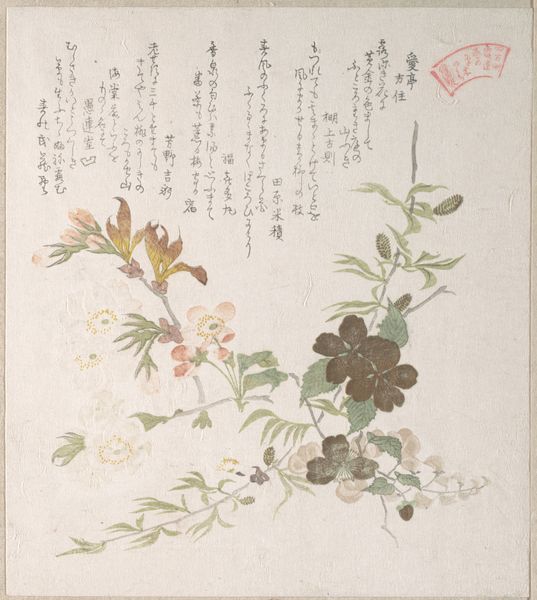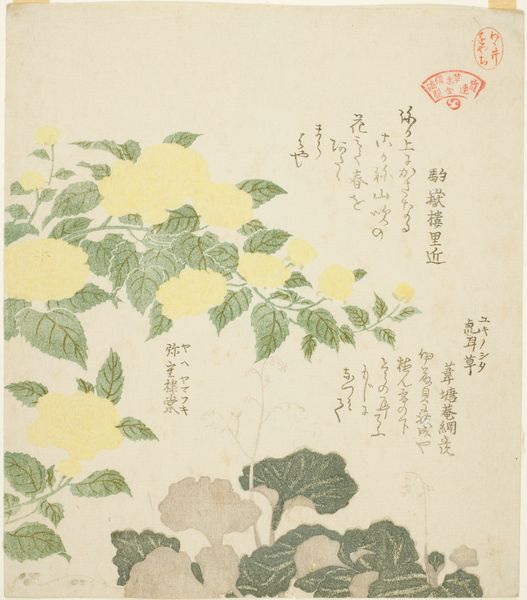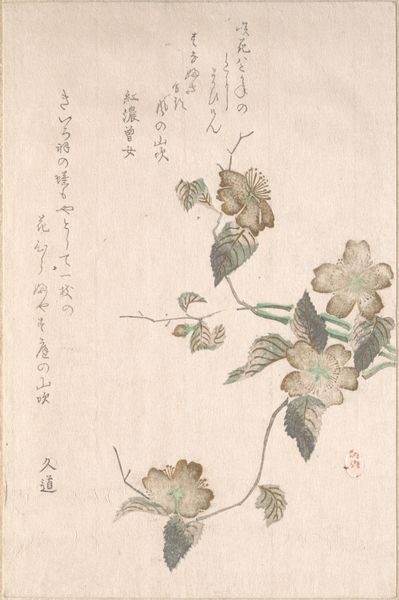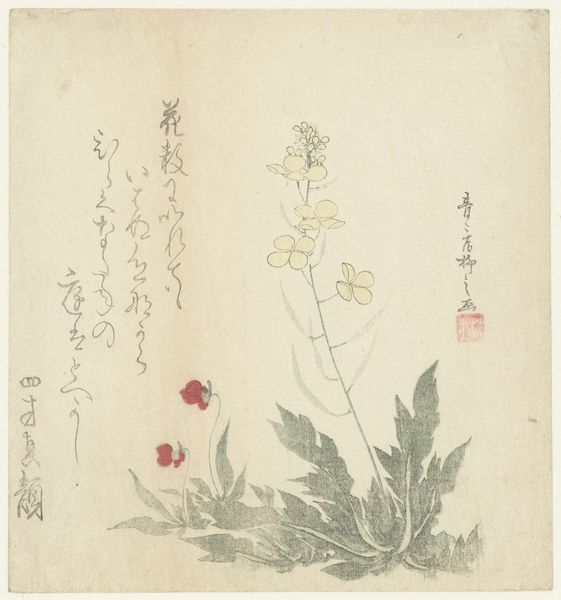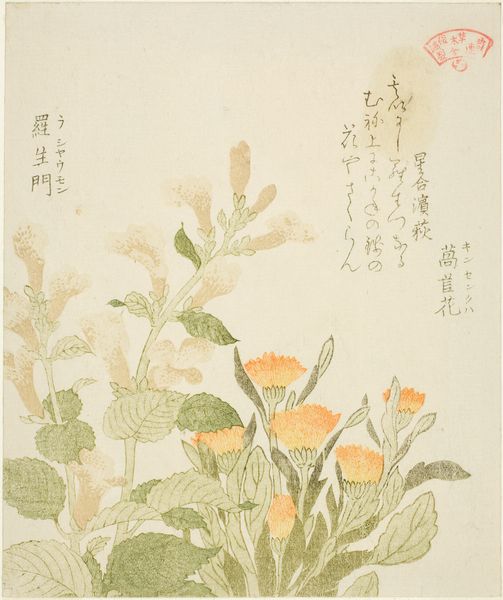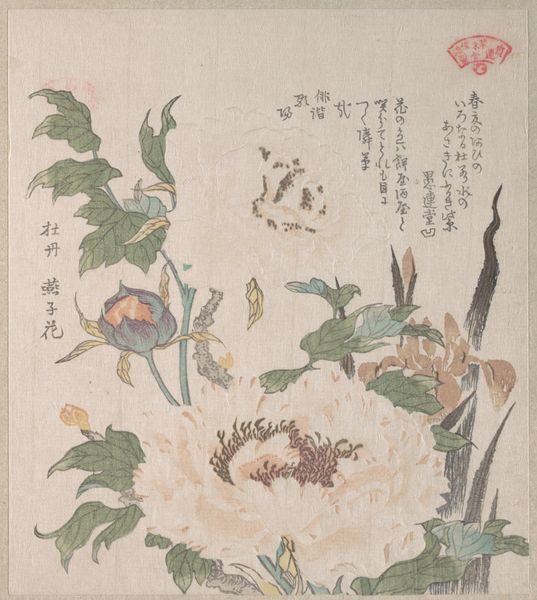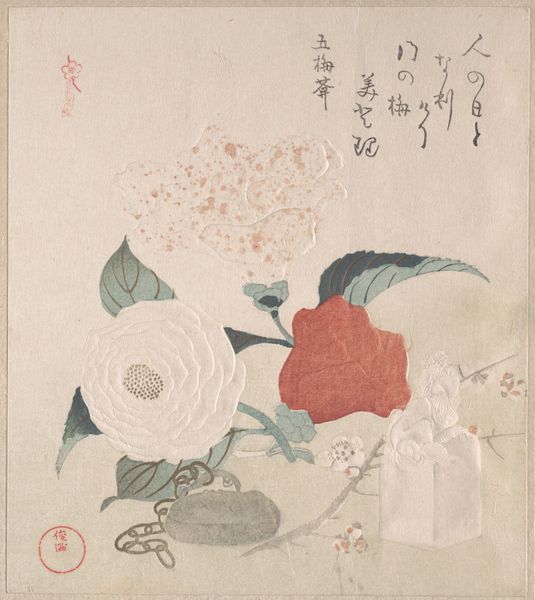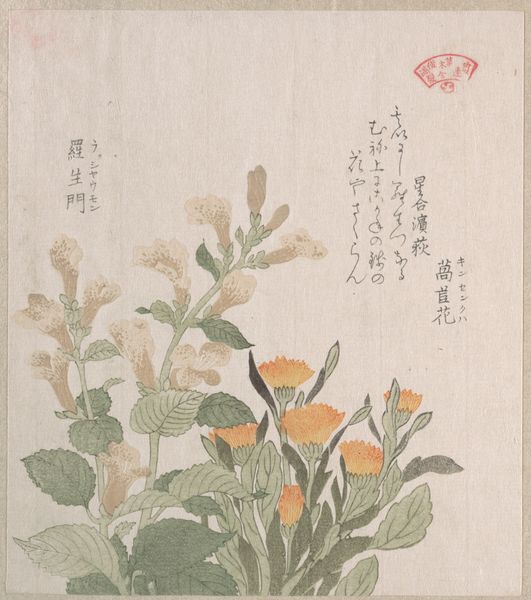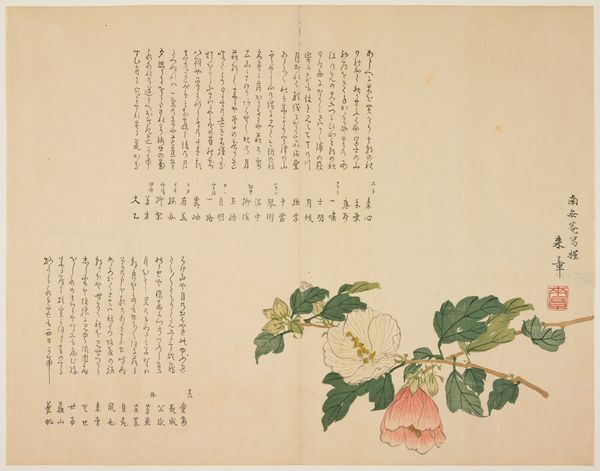
Various Spring Flowers, from the series "Springtime Plants and Trees for the Kasumi Poetry Circle of the Yomo Group (Yomogawa Kasumi-ren haru no kusaki no uchi)" c. 1820
0:00
0:00
print, watercolor, woodblock-print
# print
#
asian-art
#
ukiyo-e
#
watercolor
#
woodblock-print
#
botanical drawing
#
botanical art
#
watercolor
Dimensions: 21.1 × 18.6 cm
Copyright: Public Domain
Curator: Here we have "Various Spring Flowers, from the series 'Springtime Plants and Trees for the Kasumi Poetry Circle of the Yomo Group,'" created around 1820 by Kubo Shunman. It’s currently held at the Art Institute of Chicago. Editor: My immediate reaction is one of quietude. The soft hues, the delicate lines… it almost whispers of springtime rather than shouts. It's as if the scene were captured in a hushed moment. Curator: Indeed. Let’s delve deeper into the structure of the work. Note the precise, elegant rendering of each floral element. The composition itself, while seemingly asymmetrical, presents a sophisticated balance. Shunman masterfully utilizes negative space to draw the eye toward specific blossoms and branches. Editor: Speaking of materials, consider the impact of woodblock printing. Each line, each shade, a testament to meticulous carving and careful layering of inks. We should remember the labour and skill of the artisans who made the paper, prepared the pigments, and painstakingly transferred the image. What would it mean for these blossoms to exist outside of the privileged circles? Curator: A relevant point. Furthermore, we can read this piece through a lens of semiotics. The flowers, in their arrangement and species, might signify specific sentiments or poetic allusions, reflecting the refined sensibilities of the Yomo poetry circle for whom it was intended. What do you see, editor, when you look beyond the literal? Editor: I am interested in what happened before the print even came into being. Shunman worked within a system of patronage; and prints, then and now, carry complex questions about artistry, economics, and aesthetics. It’s difficult to engage with botanical imagery of springtime without considering this as well. Curator: And returning to form: the faintness of the colors suggests a sophisticated aesthetic choice, designed to evoke the ephemeral beauty of spring. He eschews bold, vibrant hues for subtle tonalities, creating a sense of quiet elegance. The textual inscription accompanying the image, too, invites an interpretive reading; a sort of poem nestled alongside visual artistry, complementing and completing the aesthetic. Editor: It all returns to material conditions. It shows us how deeply aesthetics are embedded in social fabrics, reminding us that every brushstroke carries a history of its own production and purpose. Curator: Ultimately, Shunman gives us more than a botanical study. Through masterful form, subtle color, and evocative symbolism, he captures a fleeting moment, rendered indelible. Editor: And what seemed at first glance merely serene reveals layers of socio-economic histories intricately intertwined.
Comments
No comments
Be the first to comment and join the conversation on the ultimate creative platform.
